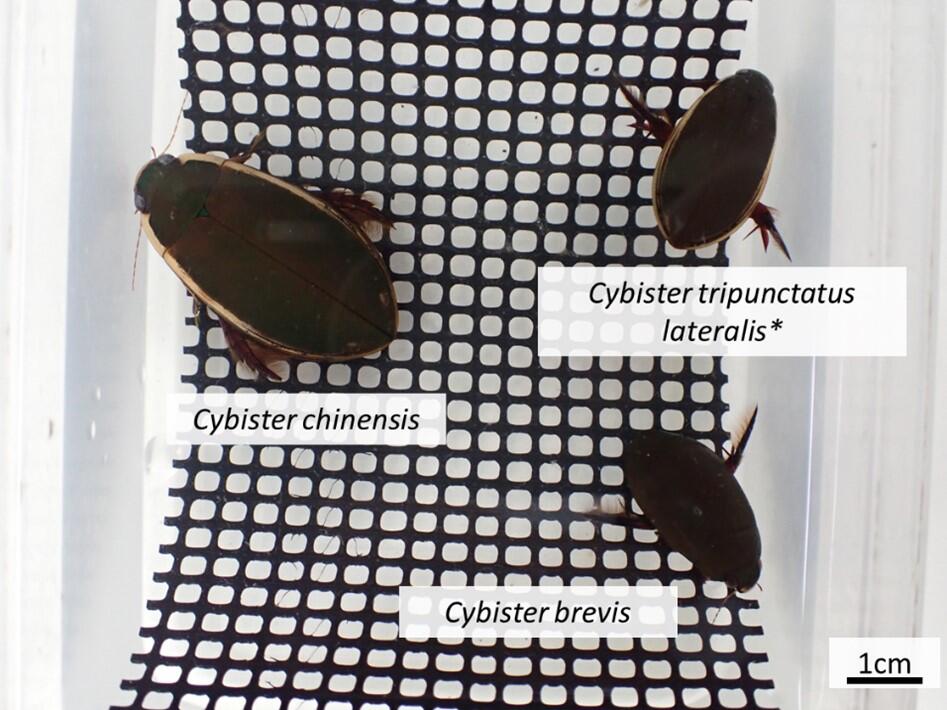A research group composed of Nagasaki University Faculty of Education Associate Professor Shin-ya Ohba and Nagasaki University Faculty of Education graduates Yasuhide Terazono (graduated in 2015) and Sho Takada (graduated in 2014) revealed for the first time that Cybister tripunctatus lateralis, which have increased in number in various parts of western Japan since around 2010 and for which new distribution records have been confirmed, is more active than other species of Dytiscidae and has favorable properties for interspecific competition. This finding was published as an early release in Hydrobiologia.

Provided by Shin-ya Ohba
Dytiscids live in ponds, swamps, and paddy fields, and were once familiar beetles, but it has been reported that their population size is decreasing annually due to the deterioration of these aquatic environments. Cybister tripunctatus lateralis is a Dytiscidae species that remained on the Nansei Island, Kyushu and the southern part of Shikoku. They were designated as Critically Endangered IA on the Ministry of Environment Red List, which indicates the most endangered species. However, since around 2010, the number of discovered cases has been increasing in areas where their distribution has not yet been confirmed. This is in addition to their rediscovery in areas where they were assumed to be extinct. As a result their status was revised downward from Critically Endangered IA to Critically Endangered II in the 2012 Ministry of the Environment Red List, as their threat of extinction had diminished.
A paper published last year by the research group, with the aim of unraveling the mystery of this increase in Cybister tripunctatus lateralis population, indicated that they cannot grow at low temperatures and their larvae survival rate increases at higher temperatures. This suggests that global warming has a positive effect on the expansion of their distribution. The present paper showed that, compared to the closely related species Cybister chinensis and Cybister brevis, Cybister tripunctatus lateralis swam more actively in water; were more likely to find food first in an aquarium tank; and had the highest food availability, even though their body size is smaller than that of Cybister brevis. It is suggested that Cybister tripunctatus lateralis have an advantage in terms of interspecific competition as they display high competitiveness and improved survival rates due to global warming.
This article has been translated by JST with permission from The Science News Ltd.(https://sci-news.co.jp/). Unauthorized reproduction of the article and photographs is prohibited.




